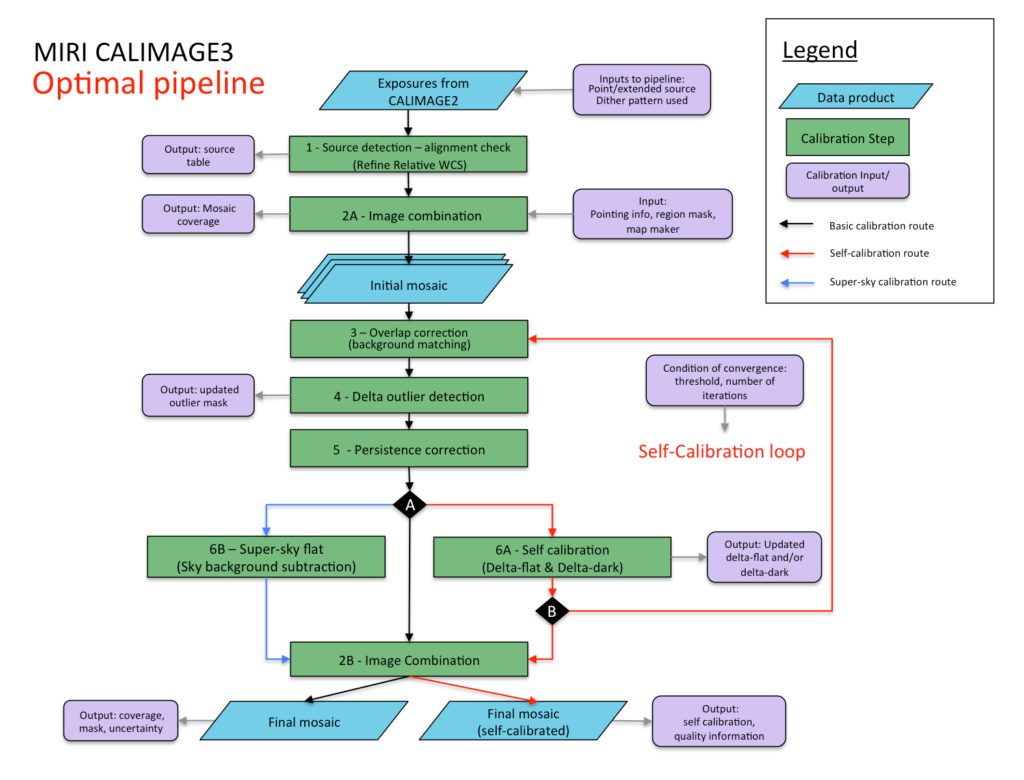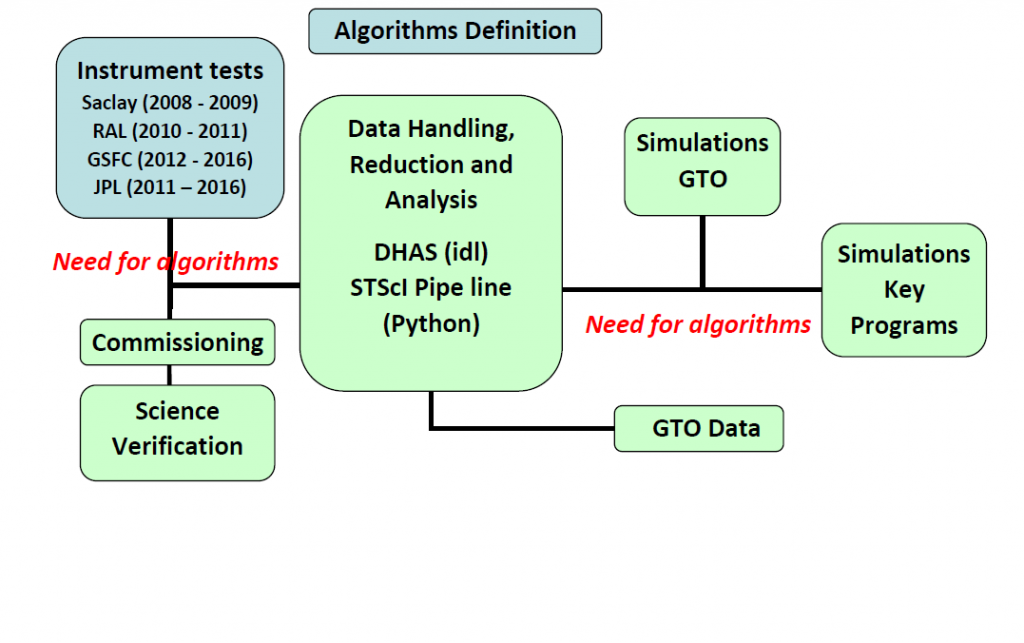MIRI CALIMAGE 3
Self-calibration is commonly referred to as taking advantage of the fact that a set of dithered images will have different pixels sampling the same position in the sky. Comparing the measured signal in these pixels can be used to study the performance of the detector and to make a correction of the image, if necessary. Calibration steps in the pipe line can then be thought of as an active rather than a passive correction.
Three primary calibration steps have been identified:
- – Baseline/background removal
- – Delta cosmic ray rejection
- – Solving for delta-flat and delta-dark (note that the suffix delta is used here to not confuse with calibration steps earlier on in the pipeline i.e. in cosmic ray rejection).








